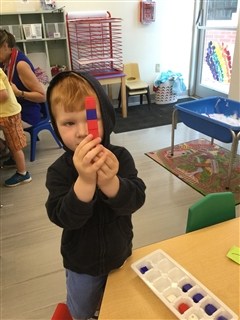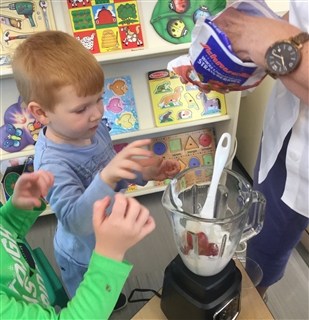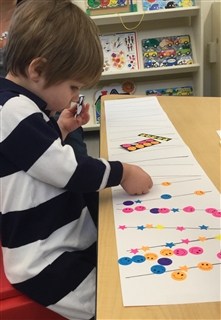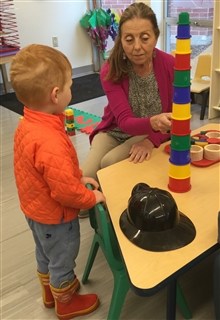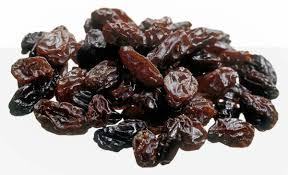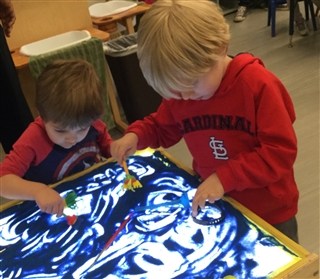Materials
3 small containers for unifix cubes: one with red unifix cubes, one with blue, unifix cubes, one with white unifix cubes
Directions
Invite your child to stack the cubes on top of each other. Older children can create various repeating patterns using the three colors of cubes. Younger children are practicing eye/hand coordination with just stacking the cubes. Younger children may not be interested in creating patterns. Count the cubes. Encourage your kindergartener to stack colors in groups of 2’s, 5’s, or 10’s (2 reds, 2 whites, 2 blues) and then count by 2’s.

